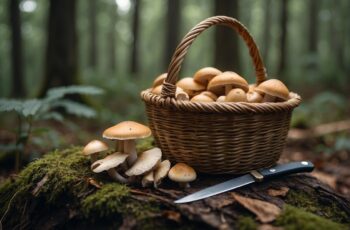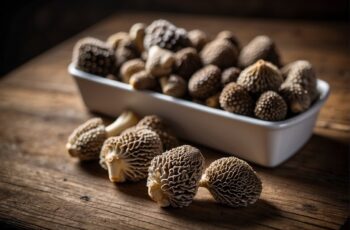Minnesota offers a remarkable variety of wild edible mushrooms, a hidden treasure trove for foragers and culinary enthusiasts alike. Your own backyard might be brimming with fungal delicacies such as the prized morels, the sought-after chanterelles, or the plentiful giant puffballs. As you explore Minnesota’s woodlands, you’ll uncover a landscape rich with these and many other edible species each season, providing an opportunity to connect with nature and add a fresh, wild-harvested touch to your cuisine.
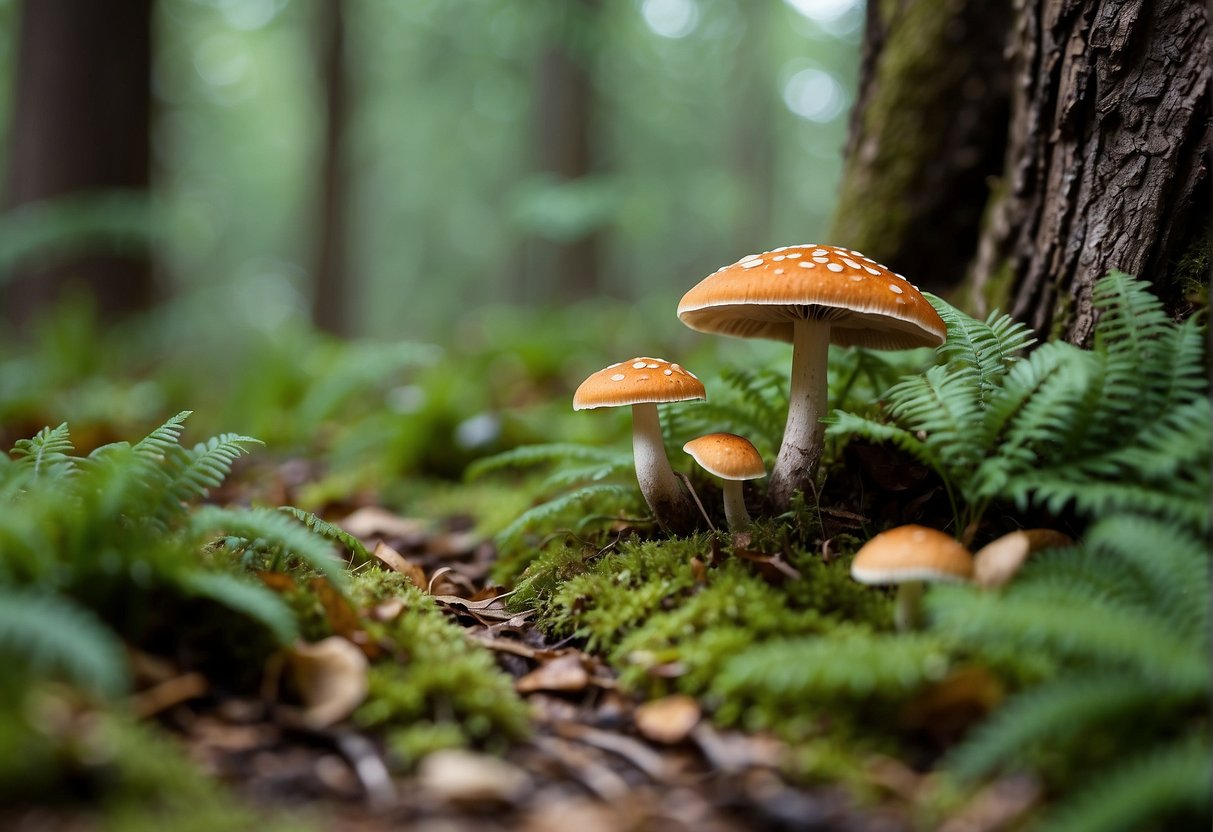
Before you embark on your foraging journey, it’s essential to arm yourself with knowledge. The ability to correctly identify edible mushrooms is crucial, as mistakes can have serious consequences. Equip yourself with a good field guide and consider learning from experienced local foragers. Remember, some edible mushrooms have toxic look-alikes, and safety should always be your top priority. Foraging not only serves as a means to a tasty end but also as a rewarding outdoor activity that can be enjoyed by friends and family while respecting the natural environment.
Key Takeaways
- Minnesota’s forests offer an abundance of edible mushrooms that provide a natural complement to your culinary endeavors.
- Correct identification is crucial for safe mushroom foraging, make sure to educate yourself or seek advice from experienced foragers.
- Foraging is a fulfilling activity that connects you with nature while emphasizing the importance of safety and environmental stewardship.
Identifying Edible Mushrooms in Minnesota
Exploring the diverse landscape of Minnesota, you’re likely to come across a fascinating variety of edible mushrooms. Knowing what to look for is key to a successful forage.
Morels and Their Varieties
Morels are among the most sought-after wild mushrooms you can find in Minnesota. They are characterized by their distinctive honeycomb caps. In the region, Morchella species such as the Black Morel (Morchella elata) and Yellow Morel (Morchella esculenta) are particularly prized for their nutty flavor. When looking for morels, search in woods near ash, elm, and oak trees following a spring rain.
Chanterelles: A Forager’s Prize
Chanterelles, especially the Golden Chanterelle (Cantharellus cibarius), stand out with their vibrant color and wavy edges. Unlike morels, chanterelles feature folds under their caps instead of true gills, which run down the stem slightly. These fleshy fungi favor moist environments with moss and are usually found from summer to early fall.
Puffballs and Other Spherical Fungi
Puffballs, such as the Giant Puffball (Calvatia gigantea), are edible when young and the interior is white. You’ll recognize these spherical fungi by their lack of a distinct stem, and their size can range from small marbles to large balls. Ensure to cut them open to check for the uniform white color; as they age, the inside turns yellowish and should not be eaten.
Distinct Features of Oyster Mushrooms
Oyster mushrooms can be identified by their fan or oyster-shaped cap and their decurrent gills, which means the gills run down the stem. These mushrooms grow in shelf-like clusters on dead or dying hardwood. Minnesota foragers can find Oyster Mushrooms (Pleurotus ostreatus) thriving in cooler weather, primarily in the spring and fall.
Foraging Tips and Safety Measures
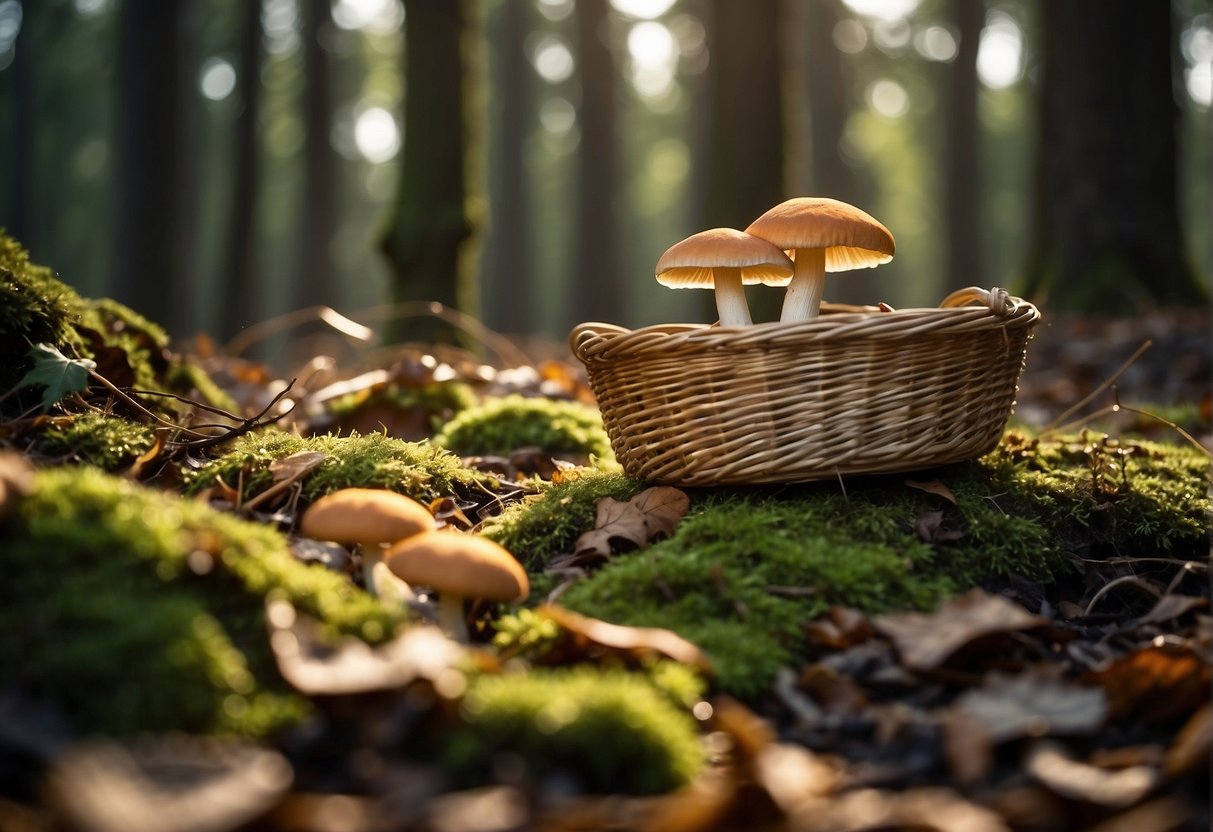
Before embarking on your mushroom foraging adventure in Minnesota’s vibrant woodlands, it’s crucial to understand the ins and outs of mushroom habitats and the imperative safe practices to adhere to. Your safety and the health of the forest ecosystem depend on this knowledge.
Understanding Mushroom Habitats
Mushrooms thrive in a variety of habitats, but woodlands with decaying wood and logs, especially under oak trees, are prime spots for many edible varieties. When you’re mushroom hunting, pay special attention to the forest floor where moisture and organic matter create an ideal environment for wild mushrooms to flourish. Identifying these areas increases your chances of a bountiful forage.
Safe Mushroom Foraging Practices
Foraging for wild mushrooms requires a high level of caution due to the presence of poisonous mushrooms that can closely resemble edible ones. Here are some guidelines to ensure your safety:
- Identify Edible Species: Arm yourself with knowledge from reliable resources about mushrooms in Minnesota, such as How to Forage For Mushrooms.
- Avoid Poisonous Look-alikes: Educate yourself on common poisonous mushrooms to avoid dangerous mistakes.
- Forage Sustainably: Take only what you need, and never overharvest. Learn about sustainable foraging to protect the ecosystem.
- Use Proper Tools: Employ a basket or paper bags to allow spores to disperse and a knife to cut mushrooms, leaving roots intact.
- Check Regulations: Some areas have specific rules about foraging. Always follow local guidelines to stay on the right side of the law.
- Take a Workshop: Consider attending a foraging workshop to gain hands-on experience. It’s a wise investment in your foraging skillset.
Remember, safety is paramount. When in doubt, leave a mushroom be. The thrill of the hunt is always second to your well-being.
Mushrooms to Avoid: Toxic and Inedible Species
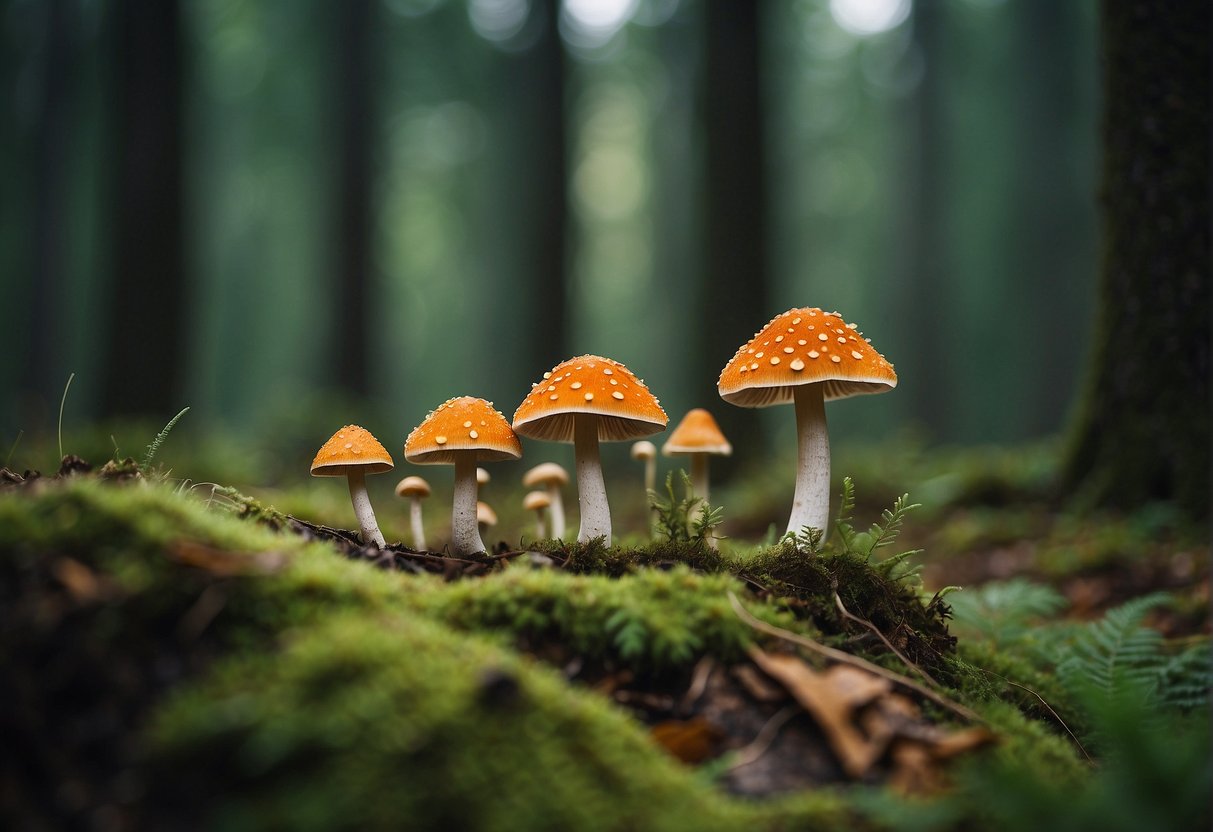
Venturing into the forests of Minnesota in search of mushrooms can be a rewarding experience, but it’s crucial to know which species to avoid. These toxic and inedible species can pose serious risks to your health if mistakenly ingested.
Recognizing Common Poisonous Varieties
Poisonous mushrooms can often be mistaken for their edible counterparts, making it essential to recognize the common toxic species in the area. The Deadly Galerina (Galerina marginata), for example, is a small brown mushroom that can be confused with harmless types but contains potent toxins that affect the liver. Similarly, the False Parasol (Chlorophyllum molybdites) is often mistaken for the edible parasol mushroom, yet consuming it leads to severe gastrointestinal distress.
A Closer Look at Amanitas
Among the poisonous varieties, the Amanita genus deserves special attention. This group includes some of the most toxic mushrooms known, such as the infamous Death Cap (Amanita phalloides) and the Fly Agaric (Amanita muscaria). While the Fly Agaric, with its iconic red cap and white spots, may look enchanting, ingesting it can cause hallucinations, confusion, and in high doses, more severe reactions. The Death Cap, often not as easy to distinguish, carries toxins that can lead to fatal liver failure. Always consult an expert or reliable field guides like those at Wildlife Informer before foraging to ensure your safety.
Culinary Use and Preservation of Edible Mushrooms
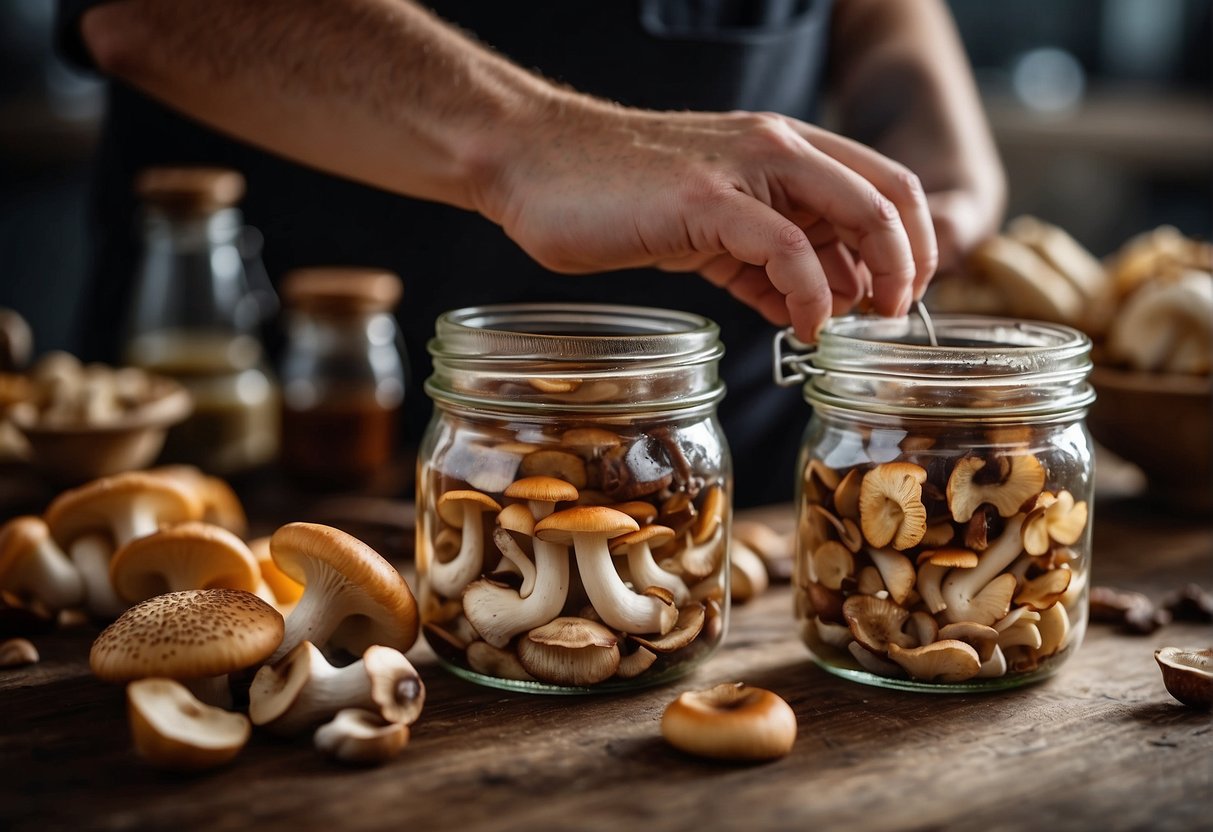
In the lush forests of Minnesota, you can find a variety of edible mushrooms that, with the proper techniques, can add delicious flavors and textures to your culinary repertoire. Knowing how to prepare and preserve these natural treasures ensures that you can enjoy their unique tastes all year round.
Preparing Wild Mushrooms for Cooking
Before cooking, clean your mushrooms gently with a brush or damp cloth to remove any debris. It’s crucial to properly identify the mushrooms you forage to ensure they’re edible. Some mushrooms may require blanching or boiling to neutralize compounds that could be upsetting to your stomach. Experiment with various recipes that allow the natural flavors of the mushrooms to stand out, such as sautéing with garlic and herbs.
- Slice or dice mushrooms to consistent sizes for even cooking.
- Sauté or roast mushrooms to bring out their richest flavors.
Preservation Techniques for Mushrooms
Drying mushrooms is an excellent method for long-term storage, intensifying both the flavors and textures. You can use a dehydrator or an oven on a low setting to dry the mushrooms until they are completely moisture-free. Store them in an airtight container in a cool, dry place.
For short-term storage, storing mushrooms in the fridge with proper ventilation is key – a paper bag works well for this. Another effective preservation method is pickling, which can imbue your mushrooms with tangy flavors, making them a delightful addition to many dishes. Remember to consult credible resources like the study on post-harvest preservation techniques for mushrooms to ensure you’re using the best methods for quality and safety.

